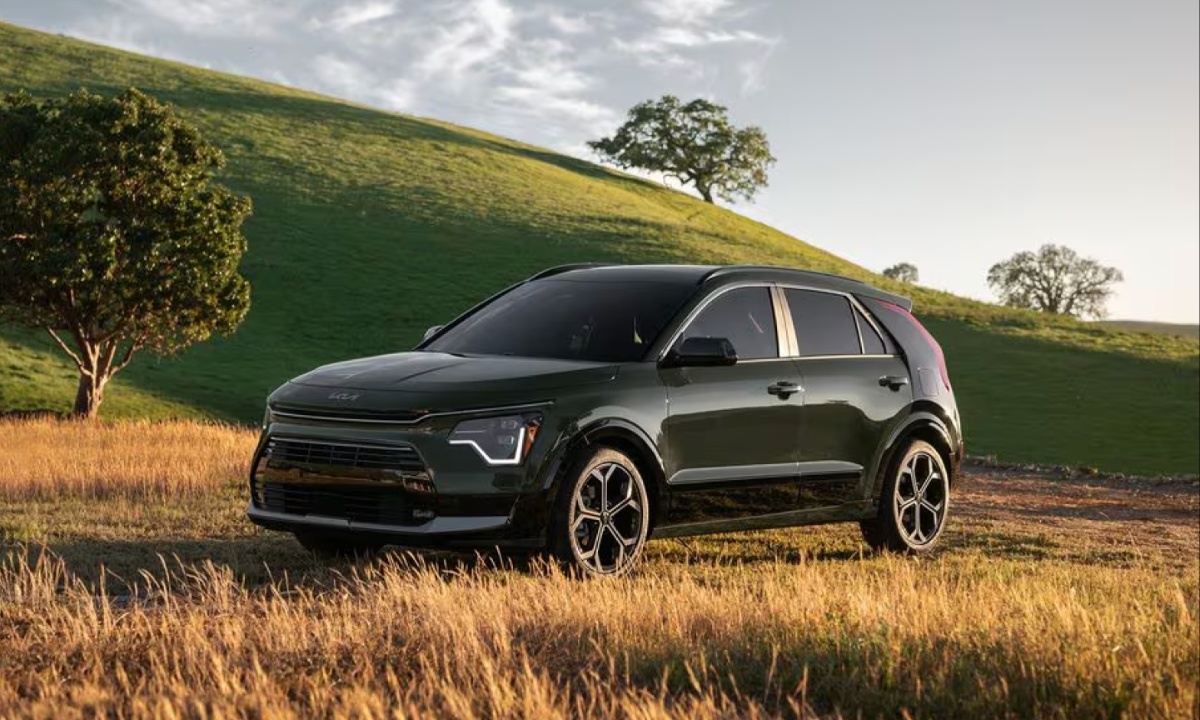In today’s fast-evolving gig economy, ridesharing has become one of the most popular ways to earn flexible income. Whether as a full-time career or a side hustle, driving for services like Uber can be a lucrative venture—but only if you approach it with the right vehicle choice.
Your car is more than just a tool; it’s your primary source of income, your office, and often your biggest expense. Therefore, selecting a vehicle that aligns with the demands of rideshare driving is crucial for maximizing earnings, minimizing downtime, and ensuring passenger satisfaction.
The decision of which car to drive for Uber involves much more than just personal preference or brand loyalty. It requires a strategic evaluation of factors such as fuel efficiency, maintenance costs, reliability, insurance expenses, and passenger comfort. The wrong vehicle can quickly turn what seems like a promising opportunity into a money pit.
High fuel consumption, frequent repairs, or poor passenger experience can eat into your earnings, reduce your availability for rides, and even affect your driver rating, an important metric in the competitive rideshare market.
Many drivers instinctively gravitate toward vehicles that offer spacious interiors or impressive horsepower, but these attributes often come with hidden costs. Larger SUVs and luxury sedans, while visually appealing and comfortable, frequently suffer from low fuel economy and expensive upkeep.
On the other hand, compact hybrids and efficient sedans can sometimes feel less exciting but prove to be money-saving workhorses that keep drivers on the road longer and more profitably.
In this article, we delve into the vehicles that stand out as the best and worst choices for Uber drivers. The “5 Cars That Are Great for Uber Drivers” section highlights models that strike an ideal balance between economy, reliability, passenger comfort, and cost of ownership.
These cars are proven winners for drivers looking to maximize profitability, minimize downtime, and maintain high ratings. From fuel-sipping hybrids to versatile compact SUVs, these vehicles demonstrate why practical considerations trump mere aesthetics or brand prestige.
Conversely, the “5 Cars That Kill Your Earnings” section exposes the hidden pitfalls of certain popular vehicles that may seem attractive at first glance but impose significant financial burdens on drivers.
From gas-guzzling SUVs to luxury vehicles with steep maintenance bills, these cars can dramatically reduce net income and complicate the ridesharing experience. Understanding these pitfalls before investing in a vehicle can save drivers from costly mistakes and long-term frustration.
Ultimately, rideshare driving is a business, and every business needs the right equipment to thrive. Your vehicle choice impacts your fuel costs, repair expenses, insurance premiums, passenger experience, and even your ability to get rides quickly and efficiently.
By carefully considering the pros and cons of different vehicles, Uber drivers can make informed decisions that improve their daily earnings and long-term financial health. This comprehensive guide aims to provide those insights, helping current and prospective rideshare drivers navigate one of their most important choices with confidence.
Also Read: 5 Cars That Break Right After Warranty and 5 That Keep Going Forever
5 Cars That Are Great for Uber Drivers
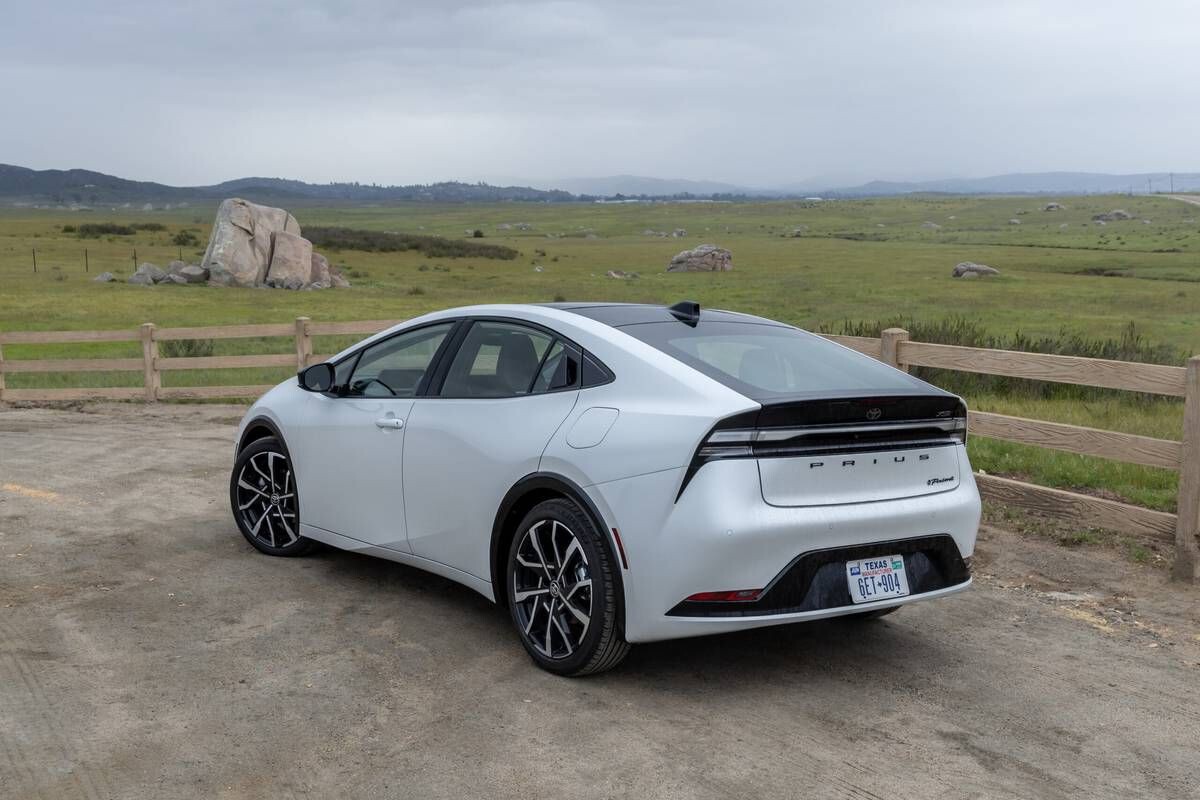
1. Toyota Prius — The King of Fuel Efficiency and Reliability
The Toyota Prius has long been the undisputed champion among rideshare drivers, and for good reason. Its hybrid powertrain delivers some of the best fuel economy in the industry, routinely achieving over 50 miles per gallon in everyday driving scenarios.
For Uber drivers who often spend upwards of 8 to 10 hours behind the wheel, this level of fuel efficiency translates to significant savings, potentially hundreds or thousands of dollars per year just on gas alone.
Fewer trips to the pump also mean less downtime, allowing drivers to stay on the road longer and maximize their earnings. Unlike traditional gasoline cars that can guzzle fuel in stop-and-go city traffic, the Prius’s hybrid system shines in urban environments, making it the perfect match for ridesharing.
Beyond fuel savings, the Prius is famed for its bulletproof reliability. Toyota’s reputation for durability is on full display here, with countless examples of Priuses running strong well past 200,000 miles. This longevity is especially crucial for Uber drivers, as frequent wear and tear can quickly rack up expenses on vehicles that aren’t built to last.
The Prius requires only standard maintenance like oil changes and brake servicing, and its hybrid components are engineered to last for the long haul, often supported by generous battery warranties. For drivers who want to avoid costly breakdowns and expensive repairs that eat into their income, the Prius offers peace of mind unmatched by most other vehicles in its class.
Comfort and passenger experience are just as important as economy when it comes to rideshare vehicles, and the Prius performs well here, too. The interior is designed to be practical and functional, with a surprisingly spacious back seat that comfortably fits two to three adults.
The low cabin noise and smooth ride make it pleasant for passengers, reducing complaints and improving ratings. Cargo space is another strong suit—the hatchback design provides ample room for luggage or groceries, which can be a deciding factor for airport trips or customers with multiple bags. While it may not be a luxury vehicle, the Prius’s user-friendly controls, touchscreen infotainment, and straightforward design make it welcoming and hassle-free.
Another significant advantage is Toyota’s extensive service network. When problems do arise, whether routine or unexpected, access to dealerships and affordable parts keeps repair turnaround times minimal, critical for drivers who can’t afford to be off the road for long.
Toyota’s hybrid technology is now widely understood by mechanics, reducing the risk of costly diagnostic errors. Additionally, many Prius owners report that the resale value remains strong even after many years, partly because the hybrid system continues to be sought after in the used car market. This helps Uber drivers recoup more of their initial investment when it’s time to upgrade or switch vehicles.
Finally, the Prius’s safety features are a boon for rideshare drivers. Most recent models come equipped with Toyota Safety Sense, which includes lane departure warnings, adaptive cruise control, automatic emergency braking, and pedestrian detection.
These technologies enhance driver confidence, particularly during long shifts or in heavy city traffic, and contribute to safer rides for passengers. When combined with its unbeatable fuel economy, proven reliability, and comfortable interior, the Toyota Prius stands out as a no-nonsense, money-saving workhorse that’s ideal for anyone serious about rideshare driving.

2. Honda Accord Hybrid — A Comfortable and Efficient Mid-Size Sedan
The Honda Accord Hybrid is a compelling option for Uber drivers who want to balance fuel economy with a larger, more comfortable cabin. Unlike compact cars, the Accord provides a roomy interior, especially in the back seat, making it a favorite for drivers who frequently pick up multiple passengers or take longer rides.
Passengers appreciate the spacious legroom and comfortable seating, which can lead to higher tips and better ratings—an important consideration in a service-driven business. The sedan’s smooth ride quality, quiet cabin, and premium-feeling materials elevate the passenger experience without pushing the vehicle into the luxury price bracket.
Fuel economy is one of the strongest selling points of the Accord Hybrid. With its efficient 2.0-liter Atkinson-cycle four-cylinder paired with electric motors, it achieves around 47 miles per gallon combined, which is impressive for a midsize sedan. This allows drivers to reduce fuel expenses significantly compared to traditional gas-powered vehicles in the same size class.
Additionally, the hybrid system provides smooth, seamless acceleration that feels natural and responsive, making city driving and highway cruising equally pleasant. The car’s refined powertrain means Uber drivers can confidently handle any route with a blend of power and efficiency.
Reliability is another key factor that makes the Accord Hybrid a smart choice. Honda’s history of solid engineering is evident in the hybrid system’s durability, with many owners reporting trouble-free operation for years and high mileage. The vehicle is also relatively easy and affordable to maintain, with widely available parts and experienced technicians.
This is essential for rideshare drivers who need a dependable car that won’t leave them stranded or lead to unpredictable repair bills. Honda’s broad dealer network adds further convenience, ensuring that drivers have access to service centers wherever they operate.
Safety also plays a major role in the Accord Hybrid’s appeal. The inclusion of Honda Sensing in many recent models means drivers and passengers benefit from advanced features like collision mitigation braking, lane-keeping assist, and adaptive cruise control.
These systems not only enhance safety but also reduce driver fatigue during long hours on the road—an often overlooked advantage in ridesharing. A safer car means fewer accidents, less downtime, and improved passenger confidence in your service. This all combines to build a professional and trustworthy reputation as an Uber driver.
Finally, the interior technology and amenities contribute significantly to passenger satisfaction. The Accord Hybrid boasts an intuitive infotainment system with smartphone integration through Apple CarPlay and Android Auto, easy-to-use controls, and a well-thought-out cabin layout. Rear passengers also benefit from USB charging ports and excellent climate control, ensuring a comfortable ride regardless of the weather.
These small details matter a lot when passengers rate their experience, and the Accord Hybrid consistently earns high marks for comfort and convenience, making it one of the most driver- and passenger-friendly vehicles in the rideshare market.
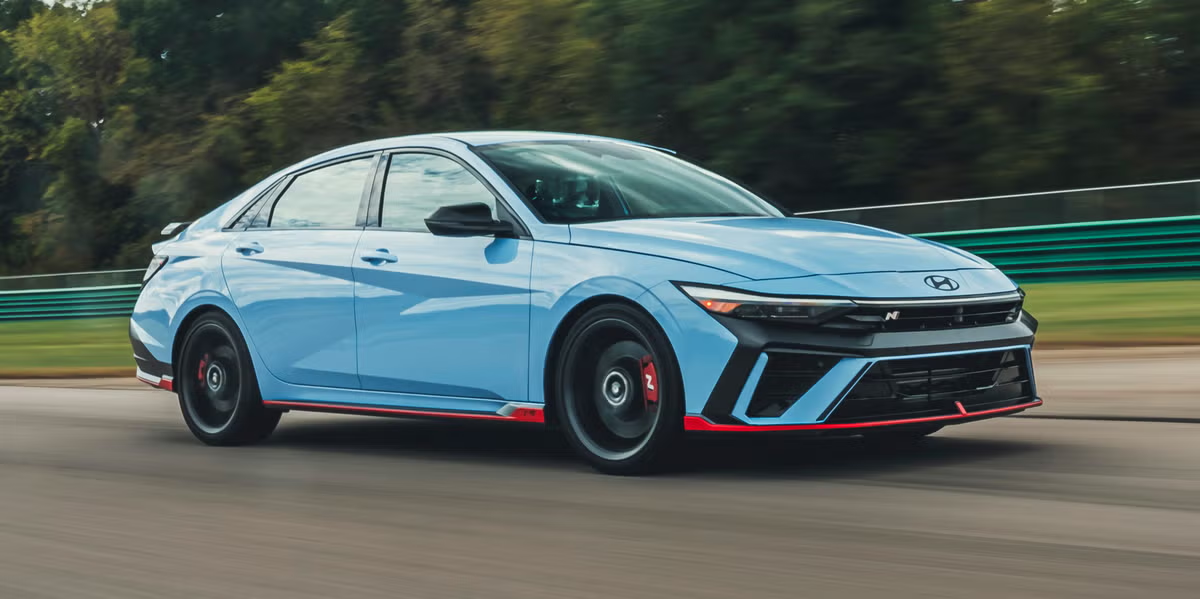
3. Hyundai Elantra — A Budget-Friendly Compact With Solid MPG
The Hyundai Elantra is an excellent option for Uber drivers looking to balance low upfront cost with respectable fuel efficiency and passenger comfort. The Elantra’s compact size makes it particularly well-suited for urban environments where parking space is limited and tight maneuvering is required.
Drivers appreciate the ease of handling in dense city traffic, as well as the smooth ride quality and refined suspension that help absorb road imperfections. More recent Elantra models have also benefited from significant interior upgrades, featuring higher-quality materials and more sophisticated styling, which enhances passenger perception despite the car’s budget-friendly origins.
Fuel economy figures for the Elantra are quite competitive, typically averaging between 33 and 37 miles per gallon combined, depending on the year and engine choice. While it’s not a hybrid, this efficiency is still impressive for a gasoline-only compact sedan, and it helps keep fuel expenses manageable for drivers on a tight budget.
The Elantra’s engines have a reputation for reliability, and Hyundai’s long warranty coverage adds an extra layer of financial protection against unexpected repairs—a critical consideration for rideshare drivers putting high mileage on their vehicles.
Passenger comfort is surprisingly good given the Elantra’s class and price point. The back seat can comfortably accommodate two adults with adequate legroom and headroom, making it a viable option for short to medium-length trips.
The ride is generally smooth, and cabin noise is well-controlled for a car in this segment, helping to improve the passenger experience and encourage higher ratings. The trunk is also spacious enough to handle luggage or shopping bags, which can be a significant advantage for airport runs or customers with more gear.
Maintenance costs for the Elantra tend to be lower than many competitors, thanks to Hyundai’s warranty and the relative simplicity of the vehicle’s design. Routine servicing is affordable and widely available, reducing downtime and allowing drivers to maximize their earnings potential.
Hyundai’s expanding dealership network ensures that drivers have access to quality service no matter where they are, a critical factor when time is money. Furthermore, Hyundai’s commitment to quality improvements in recent years has made the Elantra a more durable and reliable choice than ever before.
Finally, the Elantra offers solid value retention, meaning that when it’s time to move on to a new vehicle, drivers can expect to recoup a fair portion of their initial investment. For those starting out in the rideshare business or looking for a dependable secondary vehicle, the Hyundai Elantra presents a compelling package.
Its combination of affordability, reasonable fuel economy, solid reliability, and passenger comfort makes it a practical, efficient, and profitable choice for Uber drivers of all experience levels.
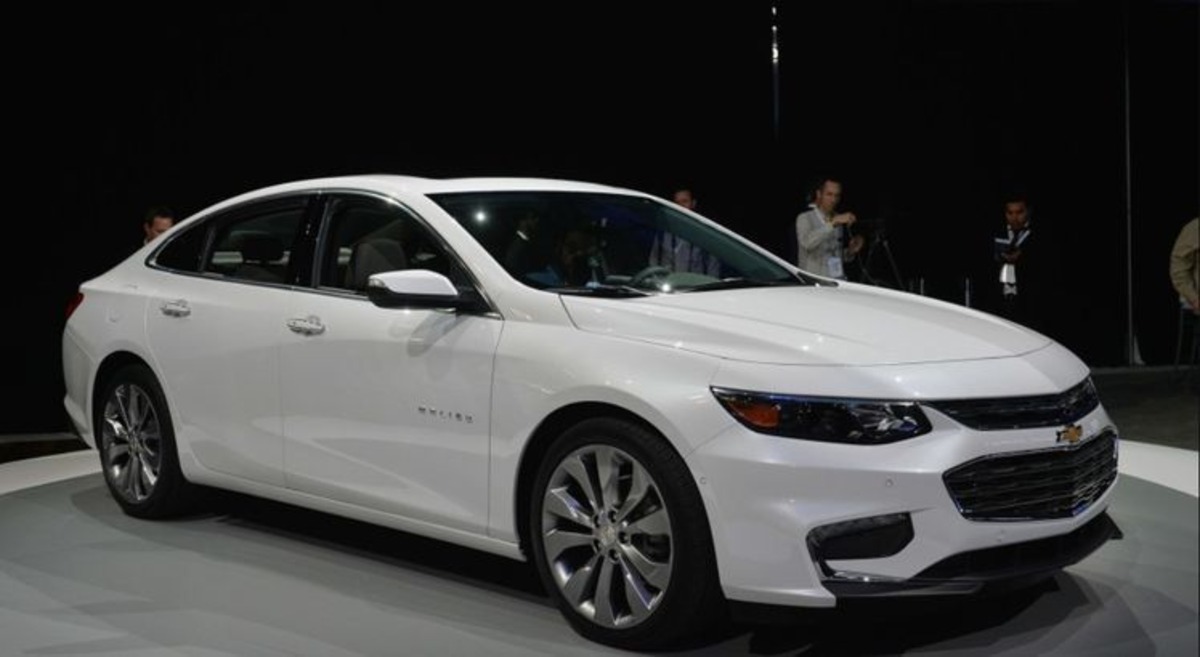
4. Chevrolet Malibu — Spacious, Comfortable, and Efficient
The Chevrolet Malibu is an attractive mid-size sedan option for Uber drivers seeking a blend of passenger comfort and reasonable fuel economy. The Malibu offers a spacious interior that rivals some more expensive competitors, with ample legroom and headroom in the rear seats, key factors in ensuring passenger comfort and positive reviews.
The smooth ride quality and well-cushioned seats make it a great choice for longer trips, such as airport runs or commutes between cities. For drivers who prioritize passenger satisfaction, the Malibu’s generous cabin space can lead to better ratings and increased tipping.
Fuel economy is decent for a mid-size sedan, especially in models equipped with the 1.5-liter turbocharged engine. Many versions of the Malibu achieve between 27 and 30 miles per gallon combined, balancing power and efficiency to keep running costs manageable. While not as economical as a hybrid, the Malibu’s fuel consumption remains reasonable, especially when compared to larger SUVs or performance sedans. This efficiency can translate to significant savings for a busy week behind the wheel.
Reliability for the Malibu has generally improved in recent generations, with fewer reported mechanical issues than some older GM models. Routine maintenance remains straightforward and relatively affordable, which is essential for rideshare drivers who need to minimize downtime and unexpected repair bills.
Chevrolet’s widespread dealership network also supports convenient access to parts and service across the country, making it easier for drivers to stay on the road. For drivers who prefer a traditional gas engine over hybrid or electric vehicles, the Malibu offers a solid and practical option.
The Malibu also scores well in terms of safety, equipped with a range of advanced features like forward collision alert, lane keep assist, and blind-spot monitoring on many trims. These systems not only protect drivers and passengers but also reduce the stress of city driving and long shifts.
A safer vehicle means fewer incidents and greater peace of mind, which ultimately supports a more sustainable driving career. Additionally, the Malibu’s infotainment system with smartphone integration adds a modern touch that passengers appreciate, contributing to a positive rider experience.
The Chevrolet Malibu strikes a balance between comfort, efficiency, and value that makes it a worthy contender for Uber drivers. It offers a roomy cabin, a smooth ride, and reasonable fuel economy without pushing into luxury car price territory. For drivers seeking a reliable, everyday sedan that passengers enjoy riding in, the Malibu is a smart and practical choice that can help increase earnings while keeping costs in check.

5. Kia Niro — The Versatile Hybrid Crossover
The Kia Niro offers a unique blend of hybrid efficiency and crossover versatility, making it an appealing option for Uber drivers who want a bit more space without sacrificing fuel economy. As a compact crossover, the Niro provides higher seating positions and easier access than sedans, which can be a significant comfort factor for both drivers and passengers.
Its roomy interior and flexible cargo space make it well-suited for transporting luggage, shopping bags, or equipment, expanding the types of trips drivers can comfortably handle. For rideshare drivers looking to offer a premium yet practical experience, the Niro strikes an excellent balance.
Fuel economy is a standout feature of the Niro. Its hybrid powertrain achieves around 46-50 miles per gallon combined, rivaling smaller hybrids like the Prius but with added space and versatility. This efficiency is crucial for full-time Uber drivers who spend extensive hours on the road, directly reducing fuel expenses and increasing profit margins.
The Niro’s smooth and responsive hybrid system adapts well to both city driving and highway cruising, delivering a comfortable ride with instant torque from the electric motor.
Reliability is another key selling point. Kia has made significant strides in recent years, improving build quality and backing the Niro with a strong warranty that covers the powertrain for up to 10 years or 100,000 miles. This reduces the risk of expensive repairs and gives drivers confidence in the vehicle’s durability over the long term.
Maintenance costs remain reasonable, and the growing Kia dealer network provides good access to parts and service, minimizing downtime. For rideshare drivers investing in a newer vehicle, the Niro’s warranty is a valuable asset.
Passenger comfort and amenities are well thought out in the Niro. The cabin features quality materials, supportive seats, and an intuitive infotainment system with smartphone compatibility—essential features for keeping passengers happy during their trips.
Rear passengers benefit from adequate legroom and headroom, making the vehicle suitable for both short and longer journeys. The elevated ride height also helps reduce motion sickness and provides better visibility for all occupants. These factors contribute to positive rider experiences, which are vital for maintaining high ratings.
In terms of safety, the Kia Niro is equipped with modern driver-assistance features such as forward collision warning, lane departure warning, and blind-spot monitoring, making long driving hours less stressful and safer. These technologies help reduce the likelihood of accidents and improve driver confidence, both crucial in a rideshare setting. The Kia Niro is a versatile, efficient, and comfortable vehicle that can help Uber drivers maximize earnings while offering an enjoyable ride to passengers.
5 That Kill Your Earnings
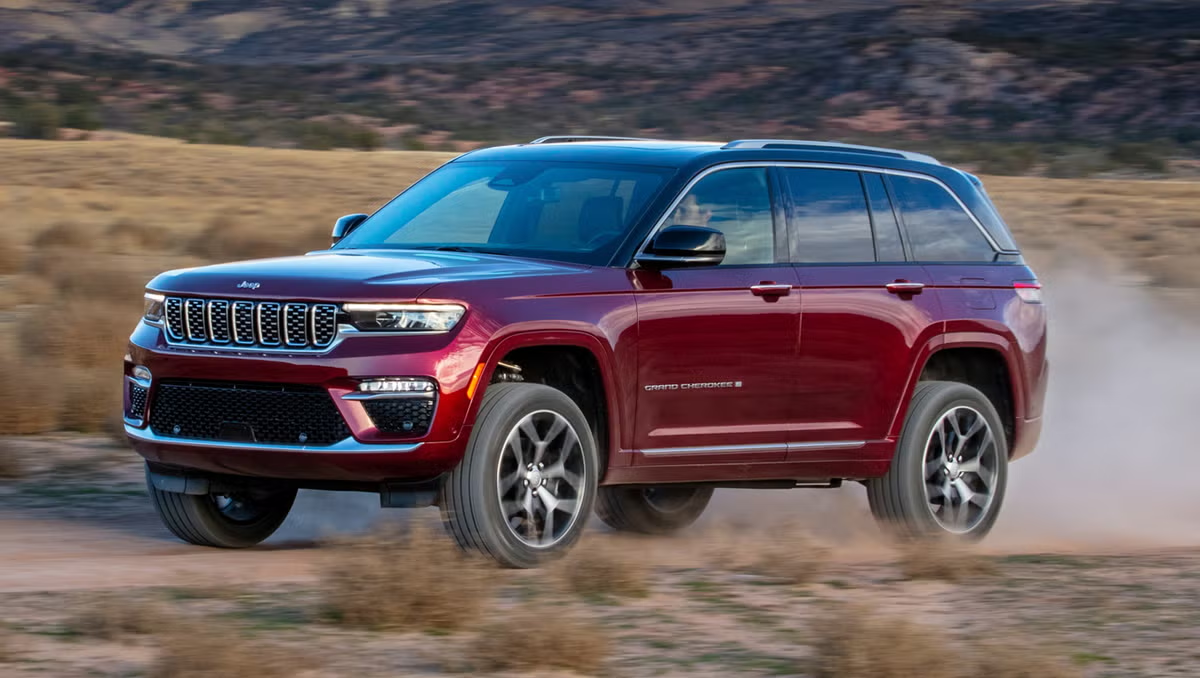
1. Jeep Grand Cherokee — Powerful but Costly to Operate
The Jeep Grand Cherokee is undeniably an attractive vehicle in terms of style and presence, but it tends to be a poor choice for rideshare drivers looking to maximize earnings. While it offers a spacious and comfortable cabin, the Grand Cherokee’s fuel economy is notoriously poor, often struggling to reach even 18-20 miles per gallon in combined city and highway driving.
For Uber drivers who spend hours on the road every day, this translates into significantly higher fuel expenses that quickly eat away at profits. Unlike smaller or hybrid vehicles designed for efficiency, the Jeep’s thirst for gas simply does not align with the financial realities of rideshare driving.
Aside from fuel costs, maintenance and repair expenses can be a major burden with the Grand Cherokee. Jeep vehicles, particularly older models, have a reputation for requiring frequent repairs, including issues with the transmission, electrical systems, and suspension components.
These repairs tend to be expensive and can lead to frustrating downtime, which Uber drivers cannot afford. The complexity of the vehicle’s off-road-oriented design means that parts are often pricier and specialized, adding another layer of cost. Drivers who rely on their vehicle as a daily income source find these unpredictably high costs a significant disadvantage.
Another issue lies in the Grand Cherokee’s ride quality and passenger experience. While the interior is spacious, the vehicle’s heavy weight and off-road tuning sometimes result in a stiffer, less refined ride compared to more road-focused sedans or hybrids.
Passengers might notice the less smooth suspension and louder engine noise, which could impact ratings and tips. For Uber drivers, who depend on consistently high passenger satisfaction, the Grand Cherokee’s driving dynamics can be a liability rather than a benefit. Additionally, its larger size makes it more difficult to maneuver and park in urban environments, slowing down pickups and drop-offs.
Insurance premiums for vehicles like the Grand Cherokee tend to be higher than average, due to their classification as SUVs with powerful engines and sometimes costly repair histories. Higher insurance costs increase the cost of ownership, eating further into a driver’s bottom line.
When combined with the lower fuel economy and potential repair bills, the Grand Cherokee quickly becomes a vehicle that significantly decreases profitability for rideshare drivers. For those driving professionally, every dollar counts, and the Jeep Grand Cherokee’s expenses stack up quickly.
Finally, resale value for the Grand Cherokee, while decent in some markets, often does not compensate for the higher ongoing costs and frequent maintenance needs. Vehicles that consume more fuel and require expensive upkeep tend to depreciate faster or sit longer on the used market, reducing the chance of a quick, profitable resale.
For Uber drivers who must eventually upgrade or sell their vehicles, this can result in a net loss. In summary, while the Jeep Grand Cherokee might look appealing and offer comfort, its operating costs make it a poor financial choice for anyone dependent on maximizing earnings behind the wheel.

2. BMW 3 Series — Luxury with Luxury-Level Expenses
The BMW 3 Series is an iconic luxury sedan known for its sporty handling and premium features, but for Uber drivers, it can be more of a financial trap than a tool for steady income. Luxury vehicles like the 3 Series come with significantly higher fuel costs compared to economy cars, often averaging around 20-25 miles per gallon, depending on the engine and driving style.
This alone drives up daily operational expenses, leaving less profit margin for drivers. Moreover, performance-oriented engines and heavier bodies mean fuel consumption can spike sharply in city traffic, which is common for rideshare work.
Maintenance and repair costs for the BMW 3 Series are among the highest in the industry. German luxury vehicles require specialized parts and labor, often at premium prices. Routine maintenance, such as oil changes or brake pad replacements, can cost double or triple that of mainstream vehicles.
Unexpected repairs, which are more frequent on older models or high-mileage cars, can be extremely expensive, involving complex electronics and performance components. For Uber drivers, who need their cars reliably on the road every day, these costs represent a huge risk and a potential earnings killer.
Insurance rates for luxury vehicles like the 3 Series tend to be substantially higher due to the cost of parts and repairs, as well as higher risks associated with powerful engines and theft rates. These increased premiums add to the cost of ownership, reducing the net income from driving.
The financial burden is compounded by the fact that luxury cars also depreciate faster in terms of miles driven and wear and tear, especially when used extensively for commercial purposes like Uber. High depreciation combined with high costs creates a lose-lose scenario for drivers.
Passenger comfort and perception can be a mixed bag. While the BMW 3 Series offers a premium ride and luxurious interior, Uber passengers might expect a certain level of professional polish that is sometimes difficult to maintain when the car is used extensively for ridesharing.
The higher wear and tear on the interior can degrade the vehicle’s appeal quickly, and drivers may need to invest in more frequent cleaning and upkeep. Furthermore, the relatively small back seat might not comfortably accommodate larger groups, limiting the types of rides that drivers can accept, especially for UberXL or group rides.
The BMW 3 Series, while attractive and fun to drive, poses significant financial challenges for rideshare drivers. Its high fuel consumption, costly maintenance, elevated insurance premiums, and faster depreciation mean that it can easily drain earnings rather than boost them. For those who want a car that generates steady, predictable income, the 3 Series is rarely the optimal choice.
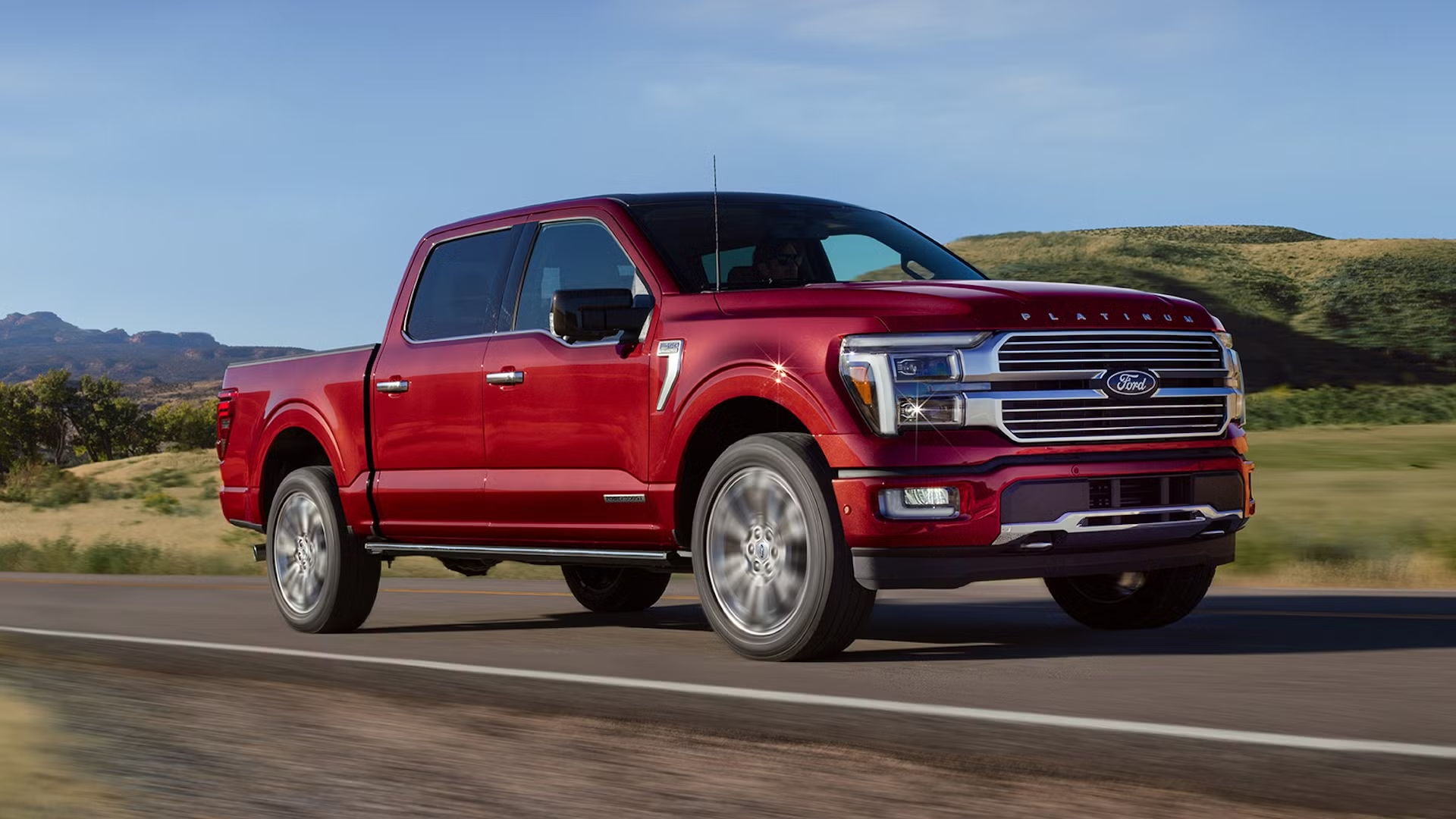
3. Ford F-150 — Versatility That Comes at a Cost
The Ford F-150 is America’s best-selling truck, beloved for its ruggedness, towing capability, and versatility. However, these very attributes that make the F-150 excellent for work and recreation become major liabilities for Uber drivers trying to maximize earnings.
Fuel economy is one of the biggest drawbacks; most F-150s average between 15 and 20 miles per gallon, depending on the engine and model year, which is far less efficient than smaller sedans or hybrids. High fuel costs combined with the high mileage that Uber drivers accumulate can drastically reduce profitability.
Maintenance and repair costs for a truck like the F-150 are often higher than for passenger cars. Trucks undergo more stress due to their heavy-duty design and often have more complex suspension and drivetrain components. Repairs on larger vehicles can be pricier, and downtime can be extended due to the difficulty in finding parts or service slots.
These issues directly affect Uber drivers, who rely on their vehicles being available every day to earn a living. Additionally, larger vehicles like trucks tend to wear out tires and brakes more quickly under heavy use, increasing routine maintenance costs.
Passenger experience in an F-150 can be less than ideal for rideshare purposes. While the cabin is spacious, especially in crew cab models, the ride can be bouncy and noisy compared to sedans or crossovers tuned for comfort.
Rear seats, while roomy, can feel less refined, and the truck’s higher ride height can make entry and exit more challenging for some passengers, particularly the elderly or those with mobility issues. This can negatively impact passenger ratings, which are crucial for maintaining a strong Uber driver profile.
Insurance costs for pickup trucks like the F-150 tend to be higher than those for smaller vehicles, partly due to their higher repair costs and increased liability risk in accidents. This means drivers pay more out of pocket every month, further squeezing profit margins. Moreover, pickup trucks depreciate significantly when used heavily for commercial purposes, which is a concern for drivers who plan to eventually sell or trade in their vehicle.
In summary, while the Ford F-150 offers power and utility, it is generally a poor fit for rideshare drivers focused on profitability. Its poor fuel economy, higher maintenance and insurance costs, and passenger comfort drawbacks all contribute to lower net earnings. Drivers better suited to urban and suburban driving will find more economical and profitable choices elsewhere.
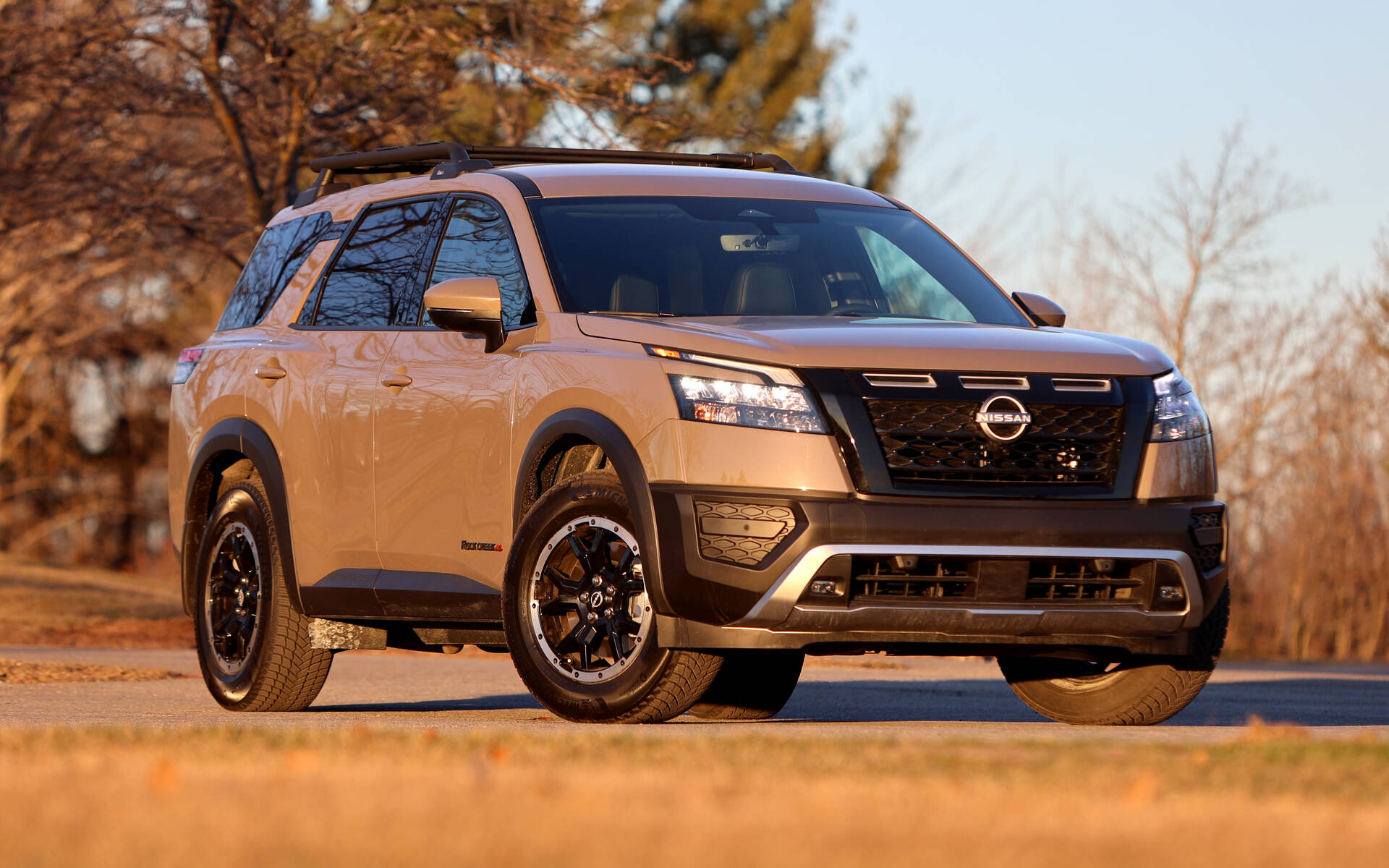
4. Nissan Pathfinder — A Gas-Guzzling Mid-Size SUV
The Nissan Pathfinder is a midsize SUV that often appeals to families and outdoor enthusiasts, but it’s far from ideal for Uber drivers looking to keep costs low and earnings high. One of the biggest issues is its fuel consumption; older Pathfinders typically get around 18-20 miles per gallon, which is relatively low compared to more fuel-efficient SUVs or hybrids. For rideshare drivers, this increased fuel usage quickly adds up and cuts into profits, especially when operating in stop-and-go city traffic.
Maintenance on the Pathfinder can also be expensive. The vehicle’s complex drivetrain and all-wheel-drive systems often require more specialized servicing, leading to higher repair bills. Common issues, such as transmission failures or electrical gremlins in certain model years, increase the likelihood of costly visits to the shop.
These repairs not only drain the driver’s budget but also lead to lost income when the vehicle is out of commission. For a vehicle used intensively like an Uber car, downtime is particularly damaging.
Passenger comfort is decent, but the Pathfinder’s ride quality can feel less refined than competitors in its segment. Road noise, less cushioned seating, and a somewhat dated interior design can diminish the passenger experience. Uber drivers know that passenger satisfaction directly influences ratings and tips, so any discomfort or complaints can negatively affect earnings.
The bulky size also makes navigating city streets and parking more challenging, slowing down pickups and drop-offs, and reducing efficiency.
Insurance premiums for the Pathfinder tend to be on the higher side, reflecting its SUV status and repair costs. This makes the total cost of ownership significantly more expensive compared to smaller, more efficient vehicles. Additionally, resale value for the Pathfinder can be mediocre, particularly if the vehicle has high mileage or a history of repairs, reducing its appeal on the used market and leading to lower trade-in offers.
In conclusion, the Nissan Pathfinder’s relatively poor fuel economy, high maintenance costs, and passenger comfort issues make it an earnings-killer for Uber drivers. While it might suit specific lifestyles, drivers focused on profitability would be better served choosing a more economical and reliable vehicle for their rideshare business.

5. Cadillac Escalade — Luxury and Size That Drain Profits
The Cadillac Escalade is a luxury full-size SUV that offers impressive style, power, and comfort, but these attributes come with significant financial drawbacks for Uber drivers. The Escalade’s fuel economy is notoriously low, often hovering around 14-16 miles per gallon, which results in sky-high fuel expenses.
For Uber drivers, whose profitability depends on minimizing costs per mile, this fuel thirst is a major liability. The Escalade’s massive engine and heavy curb weight make it one of the most gas-guzzling vehicles commonly seen on the road.
Beyond fuel costs, maintenance and repair expenses for the Escalade are extremely high. As a luxury vehicle, parts and labor costs are premium-priced, and the complexity of its electronics and drivetrain can lead to frequent, costly repairs. Components such as air suspension, advanced infotainment systems, and sophisticated safety features require expert servicing, which is not only expensive but can also lead to extended downtime. For Uber drivers, being without their vehicle even for a day or two can mean a serious loss of income.
The sheer size of the Escalade also presents challenges for passenger pickups and drop-offs. Maneuvering such a large SUV in dense urban traffic or fitting into tight parking spaces can be time-consuming and frustrating, reducing efficiency during busy shifts. While the cabin is spacious and luxurious, some passengers may find the ride less nimble or enjoyable compared to smaller, more agile vehicles. Also, the large size limits fuel stops to bigger stations, which may be less conveniently located during peak hours.
Insurance premiums for the Escalade are among the highest in the market due to its classification as a luxury full-size SUV with high repair costs and higher theft rates. These insurance costs, combined with expensive fuel and maintenance, mean drivers must earn substantially more just to break even, let alone turn a profit. Depreciation on the Escalade is steep as well, especially when subjected to the high mileage typical of rideshare work, further diminishing the vehicle’s long-term value.
In summary, while the Cadillac Escalade is undeniably impressive and comfortable, its operating costs make it one of the worst vehicles for Uber drivers aiming to maximize earnings. The combined impact of poor fuel economy, costly maintenance, high insurance, and operational challenges means that for most rideshare drivers, the Escalade will kill profits rather than create them.
Also Read: 5 Cars That Throw Random Check Engine Codes And 5 That Are Code-Clean
Choosing the right car for Uber driving is more than just picking a model you like—it’s a critical business decision that can dramatically affect your bottom line. As the demands of ridesharing continue to grow, and competition among drivers intensifies, efficiency, reliability, and cost-effectiveness have never been more important.
Through this exploration of vehicles that enhance or hinder your earnings, it becomes clear that some cars are inherently better suited to the unique challenges of rideshare work, while others pose hidden financial and operational risks.
The “5 Cars That Are Great for Uber Drivers” are not simply efficient—they are smart investments that balance low operating costs with high passenger satisfaction. Hybrids like the Toyota Prius and versatile crossovers like the Kia Niro prove that fuel economy doesn’t have to come at the expense of comfort or utility.
Vehicles like the Honda Accord and Chevrolet Malibu offer spacious cabins, smooth rides, and a reputation for reliability, all critical factors for long shifts behind the wheel. By focusing on models that minimize fuel consumption and maintenance costs while maximizing durability, drivers can increase their available work hours and reduce costly downtime. In a business where every mile counts, these cars help drivers keep more of what they earn.
On the other hand, the vehicles listed in the “5 Cars That Kill Your Earnings” section serve as cautionary tales. Luxury sedans like the BMW 3 Series and SUVs such as the Jeep Grand Cherokee or Cadillac Escalade come with high fuel consumption, expensive repairs, and elevated insurance premiums.
While these cars may offer prestige or power, they often do so at the expense of practicality and profitability. For Uber drivers, where margins can be thin, the additional costs quickly erode earnings, turning potentially lucrative shifts into break-even or loss-making efforts.
Trucks like the Ford F-150, while rugged and versatile, often lack the fuel efficiency and maneuverability necessary for efficient urban driving. Understanding these hidden costs before purchasing such vehicles can prevent financial headaches and lost income.
Moreover, passenger comfort and satisfaction play a significant role in ridesharing success. Vehicles that offer smooth rides, quiet cabins, and comfortable seating encourage positive ratings and generous tips, while rough rides or cramped interiors can discourage repeat business.
Even the most reliable car can fail if it does not meet passengers’ expectations for a pleasant ride. The best Uber vehicles strike a balance between driver economics and passenger experience, enhancing the driver’s reputation and income simultaneously.
In the end, the key takeaway for Uber drivers is to view their vehicle choice through the lens of a business owner. Prioritizing fuel efficiency, reliability, low maintenance, reasonable insurance costs, and passenger comfort will help build a sustainable and profitable rideshare career.
Avoiding cars that drain resources unnecessarily and embracing those that promote efficiency will make a tangible difference in monthly earnings and long-term financial health. This guide aims to equip drivers with the knowledge needed to make these crucial decisions wisely.
By selecting the right car, Uber drivers not only improve their daily earnings but also ensure their business remains viable in a competitive marketplace. With the right vehicle, driving for Uber can be both a financially rewarding and enjoyable endeavor, offering the freedom and flexibility so many seek in today’s economy.

